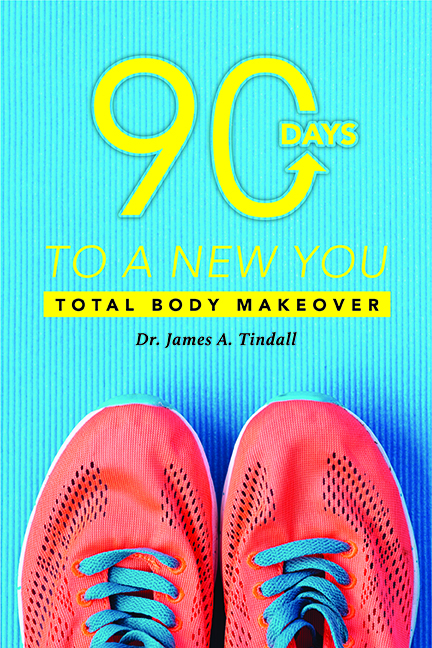Health magazines are always full of new ways to burn body fat faster than ever before. Modest to wild claims occur on a monthly basis as to what method is best to use. For the layperson, what is fact and what is fiction is often difficult to separate. This article should clarify some points for you. Also, you need to ask yourself why rather than what?
There are two methods to get the body to burn fat through exercise and, there are proponents throughout the health and fitness industry for each of these methods, i.e., there are two camps of philosophy on which method is best and sometimes arguments can become pretty heated. Every exercise you perform though, will fall on or between these methods when it comes to burning fat. Additionally, you should know that simply by exercising, the body will burn more fat calories after the exercise than if you don’t exercise. In this respect you should ask what is more important, the exercise or the method?
The two methods are very simple: 1) The body burns fat best through low-energy use, sustained exercise. An example would be a long, slow walk or ride on a stationary bike at about 50 to 60% of maximal heart rate. For a conditioned person, this exercise level could be sustained for at least 4-6 hours. At this level, it would take almost three hours before the body begins to burn more fat than carbohydrates. 2) The body burns fat best by using a much higher-intensity exercise such as running or biking at 70-80% level of maximum heart rate. Using this method, the body begins to burn more fat than carbohydrates after about 18 minutes. Regardless of method used, the body will burn more fat than carbohydrates after exercising. It will do this for up to 6 hours.
Is one of these methods better than the other for me? Two questions need to be asked: 1) Do you have time to perform method one? 2) Are you in good enough shape to perform method two?
The reality is that when beginning an exercise, the first fuel source used is glycogen (sugar in the cell that comes from carbohydrates that we eat). Also, fat and, to a limited extent, protein provide energy, but not as efficiently or as quickly. Because glycogen is continually replenished, it will continue to be the fuel used until the cell cannot supply enough for the demand. Once this happens, the body becomes aware of it and begins to draw energy from free-fatty acids that are being metabolized from adipose (fat) tissue stores on the body. As a simple explanation, higher intakes of oxygen due to exercise and increased blood flow in the fat tissues begin to stimulate this process. When the body reaches this point, more calories will be burned from fat than from carbohydrates.
What are examples of exercises that will get one to the point of burning fat faster than carbohydrates? The first example is running. If you jog at an average pace of 9-11 minutes per mile, it will required about 40 minutes of jogging before your body begins to burn more fat than carbohydrates. However, if you run faster, say about 6-7 minutes per mile, you’ll reach this point in about 20 minutes or one-half the time of the slow pace. Sounds both logical and reasonable. Why? Because after each respective time, the energy demands on the cell are such that glycogen stores become depleted to the point that they cannot provide the energy they initially provided at the beginning of the exercise. When this happens, energy supply is then drawn from metabolized fatty acids. Sounds great doesn’t it? Yes, but there are some pros and cons.
Suppose you like to run, but also want to retain as much lean muscle mass as you can so that you have a more symmetrical shape than the typical large legs and skinny upper torso of a marathon runner. If this is what you desire, you have to be careful about how long you exercise at the increased intensity. For example, if you jog more than about 5-7 miles per day, glycogen cells become depleted, energy from fatty acids being metabolized cannot supply enough energy for demand and the body goes into a virtual starvation mode. But, it needs energy from someplace, where does this energy come from? The answer is from protein, but not from protein you ingest. The protein energy supply comes from cannibalization of muscle tissue, i.e., muscle mass is lost to the body’s energy demand. In other words, the muscles are eaten alive. This is why marathon runners cannot keep muscle mass on their physique. Thus, we were able to burn lots of fat calories through long-distance running, but we lost muscle mass. If this is what you want then, this is a good method of exercising for you.
Advertisement: Amazon (click on photo for more info)

For another example, which showcases method two, let’s look at speed athletes. By this I refer to track and field athletes who run short distances very quickly. Have you ever noticed how well muscled and lean they are? Why? Method two uses the principle of very quick glycogen depletion in the cell. The best way to visualize the cell is as a plastic cup with a hole in its bottom. The cup is filled with water that represents glycogen in your cells. Your goal is to run a 100 meter dash and reach the 100 meter mark before your cup is empty. Thus, your coach or trainer fills the cup with water and you’re off. Just as you cross the finish line, your cup drains the last bit of water from the hole. This is the same thing that happens in repeated sprints. Each time you sprint, the glycogen in the cell, like water in the cup, is reduced to almost nothing then, after a short rest of 15-20 seconds, the glycogen stores within the cell are fully restored. This process can continue for about 20-40 minutes of total exercise, neglecting rest time. Once this point is past, the body then begins to burn more fat than carbohydrates or cell glycogen. Why are speed athletes able to retain muscle mass in this manner? The answer is a simple one. Because the athlete stops running when cell glycogen stores can no longer be replenished, energy demands are supplied from metabolized fatty acids. Also, because they cease exercise activity at this point, cannibalization of the muscles do not occur as in distance running since all energy demands are now being met from stored fat supplies. Remember that after exercising you will continue to burn more fat than carbohydrates since most glycogen stores will be gone by the end of a moderate intensity workout. Also, due to workout intensity, the amount of fat burned after these type workouts are a little higher than for biking or distance running.
For the latter method you would need to ask yourself if you would be individually up to the challenge to run sprints since these are a more professional level exercise and demand much more from the body. If you are elderly or have minor injuries, this may not be recommended. Another way is to blend both methods for your exercise program. A good example of this would be interval training. Let us use a stationary bike as an example. Begin by riding at an easy pace of 60-75% maximal heart rate for five minutes. Then, sprint or pedal as fast as you can until you reach about 90-95% maximal heart rate and maintain this pace for 60-90 seconds. Do this for a duration of 40-50 minutes. This will burn more fat calories than the steady pace, but because you slow down to a normal pace afterward, glycogen in the cells is replenished somewhat and allows you to continue to exercise over time without drawing on energy from your muscles., i.e., the muscles won’t be cannibalized.
Now that we know the basic methods and why fat is burned, what are some exercises that one can use besides running, jogging, biking, and so forth? Strength training is an excellent exercise to burn fat. Fat is used for 60% of the fuel source for this activity when lifting a moderate to heavy load. It’s a good activity that falls between the methods above and like interval training, has significant benefits. Instead of being aerobic like jogging or biking, it is anaerobic like sprinting and works on the same principle. Also, because you are pushing heavier loads for resistance, more energy is required for a given period. For example, an hour of jogging at the average pace will burn about 400-450 calories depending on body size, etc. Performing a strength-training regimen for the same amount of time will burn about 700 calories. Additionally, the more lean muscle mass you have, the less fat you’ll have. This does not mean you have to be a body builder because it’s not about the typical stereotype of a bunch of beefy guys screaming in the gym, it’s about you, your overall health, and your longevity. The facts are that growing muscles maintain an elevated metabolism for up to 15 hours after a workout and that they burn fat for fuel. When doing these exercises, move quickly from one to another allowing only 45-60 seconds between sets and maintaining a heart rate or 70-85% of maximum.
In reality, regardless of the method you use, the amount of fat burned while actually performing the activity is not much different between low or high intensity exercises. In summary, the best method to use to get more fat calories burning than carbohydrates are more like method two if you are capable of doing them. Examples would be interval biking or running, high intensity sprints, running at a 6-7 minute per mile pace, strength training, and similar exercises. Also, speed-strength exercises such as plyometrics, ballistics, and full-body exercises are even more efficient (read more about these in the “Training” section).
Following are some basic recommendations, which assume that you are already on an exercise regimen of some type:
1. Plan nutritional needs around your program.
2. Select exercises that you enjoy to begin.
3. Choose a variety of exercises and cross train, this makes it fun and keeps the body guessing.
4. Strength train 2-3 days per week. This burns 60% fat as a fuel source.
5. Perform cardiovascular exercises 2-3 days per week.
6. Work out at an intensity of at least 65-80% of your maximal heart rate for best benefits.
7. Consume lesser amounts fats and sugars.
8. Higher intensity exercises burn more calories and thus, more fat calories, especially after the workout. Do these if you can on a regular basis.
9. Constantly change, at least each two weeks, order, duration and intensity of your workout.
10. Stick to your program! Persistence is the main key to success!






